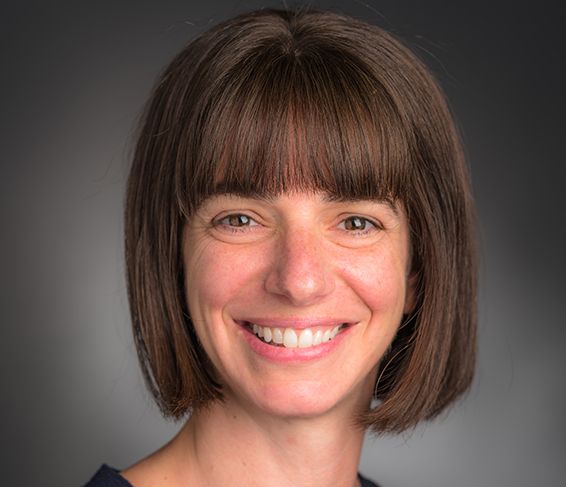CAR T-Cell Therapy With Axi-Cel Holds Promise in R/R Indolent NHL
Interim analysis of the ZUMA-5 study indicates that patients with relapsed or refractory indolent non-Hodgkin lymphoma who were treated with the chimeric antigen receptor T-cell therapy of axicabtagene ciloleucel had high rates of response and demonstrated the agent's manageable safety profile.
Caron A. Jacobson, MD

Patients with relapsed or refractory indolent non-Hodgkin lymphoma who were treated with the chimeric antigen receptor (CAR) T-cell therapy of axicabtagene ciloleucel (axi-cel; Yescarta) had high rates of complete response (CR) and demonstrated the agent's manageable safety profile, according to an interim analysis of the phase 2 ZUMA-5 study (NCT03105336) presented as part of the 2020 American Society of Clinical Oncology Virtual Scientific Program.1
“Axi-cel yields high rates of response in indolent B-cell non-Hodgkin lymphoma,” Caron A. Jacobson, MD, of the Dana-Farber Cancer Institute, said during a presentation of the data. “Although longer follow-up is needed, these responses appear to be durable amongst follicular lymphoma patients.”
Adults with relapsed or refractory follicular lymphoma (FL; grades 1-3a) and marginal zone lymphoma (MZL; nodal or extranodal) after ≥2 lines of therapy (including an anti-CD20 monoclonal antibody [mAb] with an alkylating agent), and an ECOG status of 0 or 1 were eligible for the study. Participants were leukapheresed and received conditioning chemotherapy followed by axi-cel infusion at 2 × 106 CAR T-cells/kg.
Of the 96 patients evaluable for efficacy, the objective response rate (ORR) was 93% (95% CI, 86%-97%) and the CR rate was 80% (95% CI, 71%-88%). The median time to first response was 1 month (range, 0.8-3.1). More specifically, patients with FL (n = 80) had an ORR of 95%, with an 81% CR rate, and those with MZL (n = 16) had an ORR of 81% with a 75% CR rate.
With a median follow-up of 15.3 months, the estimated duration of response (DOR) in all patients was 20.8 months, and 68% of patients with FL had an ongoing response as of the data cut-off. Moreover, the median PFS was 23.5 months (95% CI, 22.8 - not evaluable) in all patients, and the median overall survival (OS) was not reached. However, the 12-months OS rate was 94.3% (95% CI, 86.8-97.6) for all patients.
These interim results suggest that axi-cel may be a promising approach for treating this patient population.
The primary endpoint of the study was ORR by central review. Key secondary endpoints included DOR, progression-free survival (PFS), OS, safety, and blood levels of cytokines and CAR T-cells.
As of December 16, 2019, 140 patients (FL, n = 124; MZL, n = 16) had received axi-cel with a median follow-up of 15.3 months (range, 1.9-28.8). The median age of the participants was 63 years of age (range, 34-79), 49% of patients were male, 52% had stage IV disease, 51% had ≥ 3 FLIPI, and 49% had high tumor bulk (GELF). Moreover, patients had a median 3 prior lines of therapy, 66% progressed < 2 years after initial anti-CD20 mAb-containing therapy (POD24), and 73% were refractory to the last prior treatment.
All of the study participants were evaluable for safety, and 119 patients (85%) experienced grade ≥ 3 adverse events (AEs). The most commonly observed AEs were neutropenia (34%) and anemia (22%). Additionally, grade ≥ 3 cytokine release syndrome (CRS) and neurologic events (NEs) occurred in 8% and 17% of patients, respectively. There were only 2 grade 5 AEs, including multisystem organ failure in the context of CRS (related to axi-cel) and aortic dissection (unrelated to axi-cel).
“Given the long natural history of these diseases, safety is of paramount importance,” Jacobson said. “The safety profile was manageable and reversible, and appeared to be at least similar to that of axi-cel in aggressive lymphomas.”
The median time to peak of anti-CD19 CAR T-cell levels after axi-cel infusion was 8 days (range, 8 - 371). Furthermore, anti-CD19 CAR T-cells were detectable at 18 months in most patients with evaluable samples (13/15 [87%]).
Notably, in patients with FL, peak CAR T-cell expansion was associated with both grade ≥3 CRS (P = 0.0088) and neurologic events (P = 0.0076). In addition, peak serum analyses across multiple immune programs were associated with grade ≥ 3 CRS, grade ≥ 3 neurologic events, or both in patients with FL.
“This may have implications for the possibility of outpatient therapy for this disease in the future,” said Jacobson.
“Axi-cel appears to be a promising therapeutic approach for patients with relapsed and refractory indolent B-cell non-Hodgkin lymphoma.”
Axi-cel is currently approved by the FDA as a treatment for adult patients with relapsed or refractory large B-cell lymphoma based on findings from the phase II ZUMA-1 trial.2 The agent is indicated specifically following 2 prior therapies for those with diffuse large B-cell lymphoma (DLBCL), primary mediastinal large B-cell lymphoma (PMBCL), high grade B-cell lymphoma, and DLBCL transformed from follicular lymphoma (TFL).
References
- Jacobson CA, Chavez JC, Sehgal AR, et al. Interim analysis of ZUMA-5: A phase II study of axicabtagene ciloleucel (axi-cel) in patients (pts) with relapsed/refractory indolent non-Hodgkin lymphoma (R/R iNHL). Presented at: 2020 ASCO Virtual Scientific Meeting; May 29, 2020. Abstract 8008.
- FDA approves CAR-T cell therapy to treat adults with certain types of large B-cell lymphoma. FDA website. Published October 18, 2017. fda.gov/news-events/press-announcements/fda-approves-car-t-cell-therapy-treat-adults-certain-types-large-b-cell-lymphoma. Accessed May 30, 2020.
Examining the Non-Hodgkin Lymphoma Treatment Paradigm
July 15th 2022In season 3, episode 6 of Targeted Talks, Yazan Samhouri, MD, discusses the exciting new agents for the treatment of non-Hodgkin lymphoma, the clinical trials that support their use, and hopes for the future of treatment.
Listen